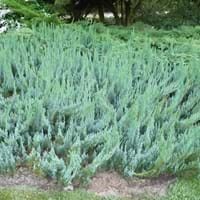Life Span
Perennial
Perennial
Type
Bulb or Corm or Tuber
Needled or Scaled Evergreen
Origin
South America
North America
Types
Pamianthe cardenasii , Pamianthe parviflora , Pamianthe peruviana
Bar Harbour, Andorra Compacta, Blue Forest, Blue Chip, Douglasii, Blue Rug, Glauca, Gold Carpet, Icee Blue, Gold Carpet, J.J. Hughes, Marcellus
Habitat
All sorts of environments
Fields, Pastures, Upland soils
USDA Hardiness Zone
8-10
4-9
Sunset Zone
21,22
A1, A2, A3, H1, H2, 1a, 1b, 2a, 2b, 3a, 3b, 4, 5, 6, 7, 8, 9, 10, 11, 12, 13, 14, 15, 16, 17, 18, 19, 20, 21, 22, 23, 24
Habit
Clump-Forming
Mat-forming
Flower Color
White
Pink, White
Flower Color Modifier
Bicolor
Bicolor
Fruit Color
Green
Gray, Purple
Leaf Color in Spring
Dark Green
Light Green, Blue Green, Olive, Gray Green, Dark Green, Yellow green
Leaf Color in Summer
Light Green
Light Green, Blue Green, Olive, Gray Green, Dark Green, Yellow green
Leaf Color in Fall
Several shades of Green
Light Green, Blue Green, Olive, Gray Green, Dark Green, Yellow green
Leaf Color in Winter
Light Green
Purple, Light Green, Blue Green, Olive, Gray Green, Dark Green, Yellow green
Leaf Shape
Strap shaped
Scale-like imbricate
Plant Season
Spring, Summer, Fall
Spring, Summer, Fall, Winter
Sunlight
Partial Sun, Partial shade
Full Sun, Partial Sun, Partial shade, Full Shade
Type of Soil
Loam, Sand
Loam, Sand
The pH of Soil
Acidic, Neutral, Alkaline
Acidic, Neutral, Alkaline
Soil Drainage
Average
Average
Bloom Time
Spring, Late Spring, Early Summer, Summer, Late Summer
Not Available
Tolerances
Drought
Drought
Where to Plant?
Ground, Pot
Container, Ground
How to Plant?
Offsets
Hardwood Cuttings, Semi-hardwood cuttings, Softwood cuttings, Stem Cutting
Plant Maintenance
Medium
Medium
Watering Requirements
Keep the ground moist but not water-logged
Average Water Needs, Do Not over Water, Requires regular watering
In Summer
Lots of watering
Lots of watering
In Spring
Moderate
Moderate
In Winter
Average Water
Average Water
Soil pH
Acidic, Neutral, Alkaline
Acidic, Neutral, Alkaline
Soil Type
Loam, Sand
Loam, Sand
Soil Drainage Capacity
Average
Average
Sun Exposure
Partial Sun, Partial shade
Full Sun, Partial Sun, Partial shade, Full Shade
Pruning
Pinch or prune as they grow to promote branching and bushiness, Remove damaged leaves, Remove dead branches, Remove dead leaves, Requires little pruning
Remove damaged leaves, Remove dead branches, Remove dead leaves
Fertilizers
All-Purpose Liquid Fertilizer, High phosphorus
All-Purpose Liquid Fertilizer
Pests and Diseases
Leaf spot, Mosaic viruses
Tip blight, Twig blight
Plant Tolerance
Drought
Drought
Flowers
Showy
Insignificant
Flower Petal Number
Single
Single
Foliage Texture
Coarse
Medium
Foliage Sheen
Glossy
Matte
Attracts
Bees, Birds, Bumblebees, Butterflies, Hummingbirds, pollinators
Butterflies, Hummingbirds, Wildlife
Allergy
Unknown
Not Available
Aesthetic Uses
Beautification, Bouquets, Ornamental use, Showy Purposes
Decorating walls, Ground Cover, slopes
Beauty Benefits
No Beauty Benefits
Not Available
Environmental Uses
Air purification
Air purification
Medicinal Uses
No Medicinal Use
Diaphoretic, Febrifuge, Kidney problems
Part of Plant Used
Not Available
Leaves
Other Uses
Beneficial species for attracting pollinators, Decoration Purposes
Incense
Used As Indoor Plant
No
No
Used As Outdoor Plant
Yes
Yes
Garden Design
Bog Garden, Container, Feature Plant, Foundation, Mixed Border, Water Gardens
Container, Edging, Groundcover, Topiary, Bonsai, Espalier
Botanical Name
HYMENOCALLIS longipetala
JUNIPERUS horizontalis
Common Name
Peruvian Daffodil, Spiderlily
Creeping Juniper, Horizontal Juniper
In Hindi
peruvian daffodil
Creeping Juniper
In German
peruvian daffodil
Kriech-Wacholder
In French
peruvian daffodil
Genévrier rampant
In Spanish
Pamianthe
Creeping Juniper
In Greek
peruvian daffodil
Creeping Juniper
In Portuguese
peruvian daffodil
Creeping Juniper
In Polish
peruvian daffodil
Jałowiec płożący
In Latin
peruvian daffodil
Creeping Juniper
Phylum
Magnoliophyta
Coniferophyta
Class
Liliopsida
Pinopsida
Order
Asparagales
Pinales
Family
Amaryllidaceae
Cupressaceae
Genus
Pamianthe
Juniperus
Clade
Angiosperms, Monocots
Not Available
Tribe
Clinantheae
Not Available
Subfamily
Amaryllidoideae
Not Available
Number of Species
Not Available
Not Available





